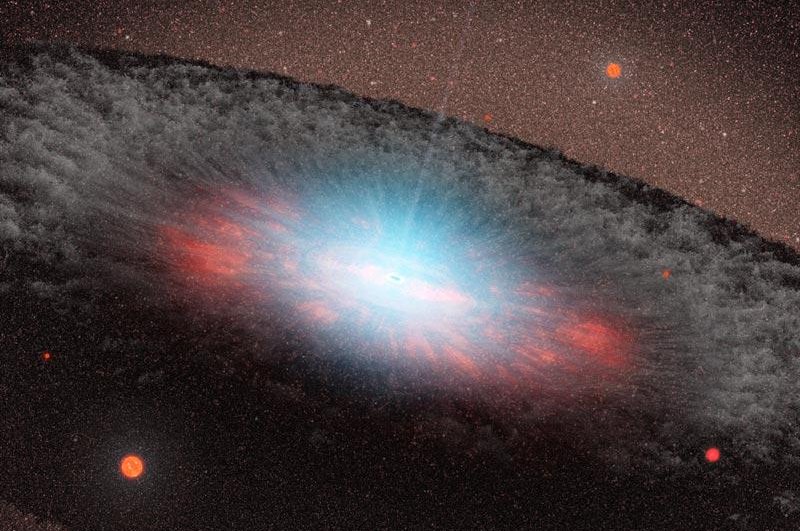An artist's rendering shows a single supermassive black hole at the center of a galaxy. Researchers believe gravitational waves are created by the merger of two black holes. Photo by NASA/JPL-Caltech
April 5 (UPI) -- Scientists are now closer to understanding how a pair of black holes meet and merge.
In 2015, the Laser Interferometer Gravitational-wave Observatory detected gravitational waves produced by a black-hole merger, confirming a significant prediction of Albert Einstein's 1915 general theory of relativity. The LIGO detectors identified the signal of another merger just a few months later.
The discoveries confirmed the origin of gravitational wave disturbances, but they didn't help explain how black holes come to merge.
All astronomical phenomena are confined by the age of the universe. For a black hole merger to fit within the temporal confines of the cosmos, the two black holes would need to begin their lives in close proximity -- closer than Earth is to the sun. Most black hole-yielding massive stars grow much larger than a single astronomical unit.
Astrophysicists at the University of Birmingham developed a model to test scenarios that might explain the phenomenon. They named their analytical toolkit COMPAS -- short for Compact Object Mergers: Population Astrophysics and Statistics -- and the most promising theory "isolated binary evolution."
Under the scenario, two progenitor stars begin life far from each other. As they expand, they begin to interact, engaging in intermittent episodes of mass transfer.
Eventually, their interactions becomes defined by a common-envelope phase as their stellar cores become shrouded in a dense cloud of hydrogen gas. Dynamically unstable mass transfer continues.
As the model proved, the process puts the stars close enough to yield gravitational waves without making direct contact with one another. The evolution from stellar pair to black hole pair takes just a few million years, but a merger may not occur for several billion years.
"The beauty of COMPAS is that it allows us to combine all of our observations and start piecing together the puzzle of how these black holes merge, sending these ripples in spacetime that we were able to observe at LIGO," Simon Stevenson, a doctoral student at Birmingham, said in a news release.
Researchers shared their analysis in the journal Nature Communications.
"This work makes it possible to pursue a kind of 'paleontology' for gravitational waves," said Ilya Mandel, senior study author and Birmingham professor. "A paleontologist, who has never seen a living dinosaur, can figure out how the dinosaur looked and lived from its skeletal remains. In a similar way, we can analyze the mergers of black holes, and use these observations to figure out how those stars interacted during their brief but intense lives."















